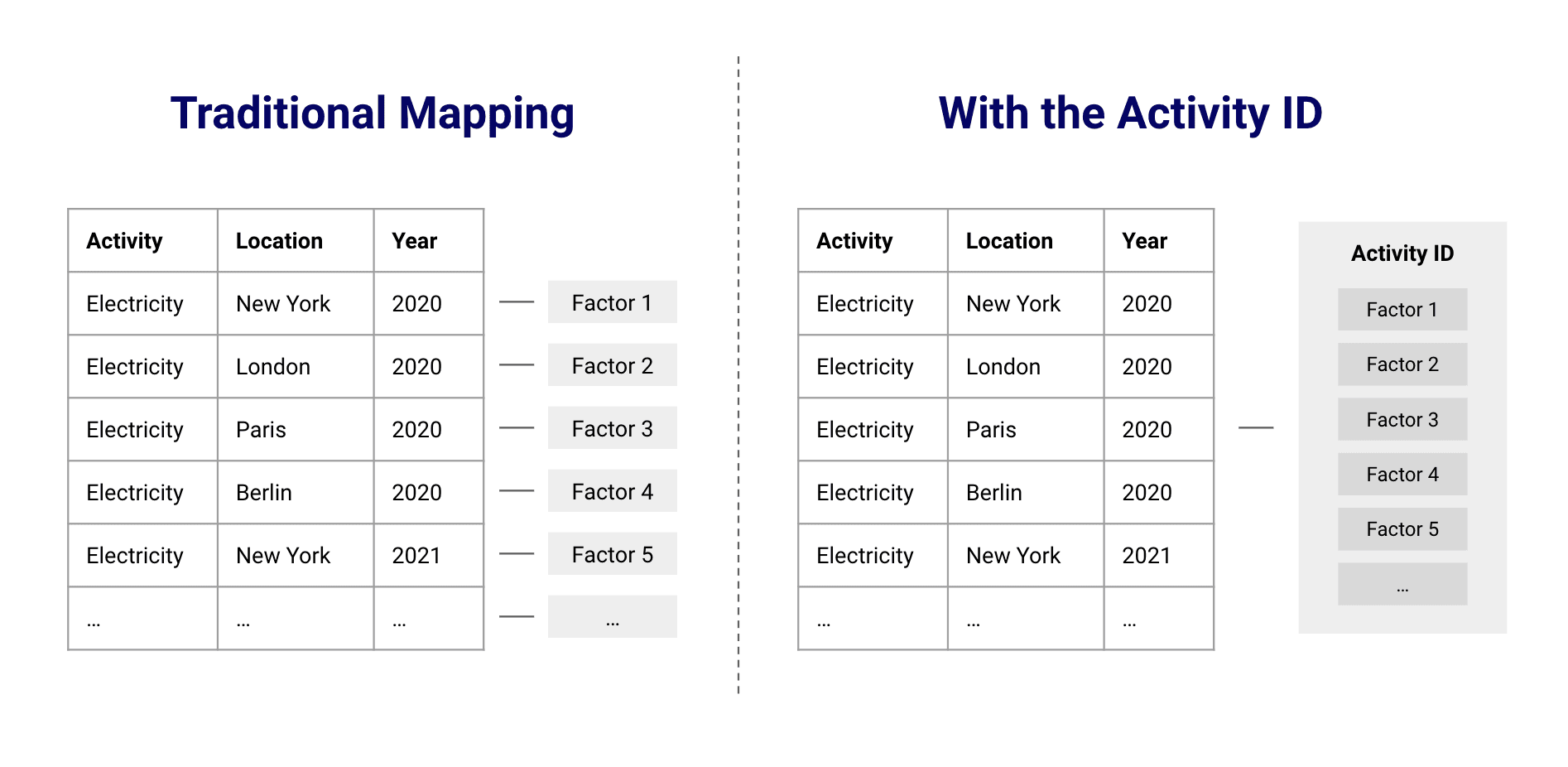What Is An Activity ID?
Instead of searching for individual factors, the Activity ID groups similar activities together, allowing you to easily perform calculations across different years, regions, and sources
Climatiq assigns an activity ID to every emission factor in the database. Unlike the unique Emission Factor IDs, the activity ID is not unique for each factor. Instead, a single activity ID is shared by a set of factors that account for emissions of the same type of activity, such as electricity supply from the average grid mix. This means that an activity ID groups together emission factors describing the same activity across all regions, years, sources, LCA stages and unit types. When calling the API, you can use the activity ID along with additional data to easily perform calculations for the same activity across years, regions, sources and more.
Simplifying emission calculations: using activity IDs to automate estimates
The primary advantage of using an Activity ID is that it streamlines the process of connecting specific activities with their corresponding emission factors.

Let’s say you want to determine the electricity emissions for your offices in New York, London, Berlin, and Paris for both 2020 and 2021. Typically, you’d have to manually find the appropriate emission factor for each combination, such as average grid mix emissions in New York for both years, requiring eight separate searches.
However, since all electricity emission factors for the average grid mix are grouped under one Activity ID, you only need to map it once to the correct ID — in this case, electricity-supply_grid-source_total_supplier_mix. By using this ID, you can easily make API calls for each consumption data point, like 800 kWh of electricity used in London in 2020, while specifying the region and year in your API request. Instead of manually searching for individual factors, the API will handle finding the relevant 2020 UK-based electricity emission factor from the database.
curl --request POST \
--url 'https://api.climatiq.io/data/v1/estimate' \
--header "Authorization: Bearer $CLIMATIQ_API_KEY" \
--data '{
"emission_factor": {
"activity_id": "electricity-supply_grid-source_total_supplier_mix",
"region": "GB",
"year": 2020,
"data_version": "^21"
},
"parameters": {
"energy": 800,
"energy_unit": "kWh"
}
}'Furthermore, this approach greatly simplifies using newly published emission factors when they become available. When emission factors for a different year is published, they will be grouped under the same activity ID. All you need to do to get the newest dataset is to call the API and specify the new year, since the ID remains consistent across multiple years.
The naming of the Activity ID
The ID attempts to describe the activity as accurately as possible while achieving a certain level of abstraction. Therefore, some Activity IDs may appear similar but have slight differences in specifications that impact the carbon footprint. For instance, while there is the Activity ID electricity-supply_grid-source_total_supplier_mix for general grid mix emissions, there is also one for the residual mix, electricity-supply_grid-source_residual_mix.